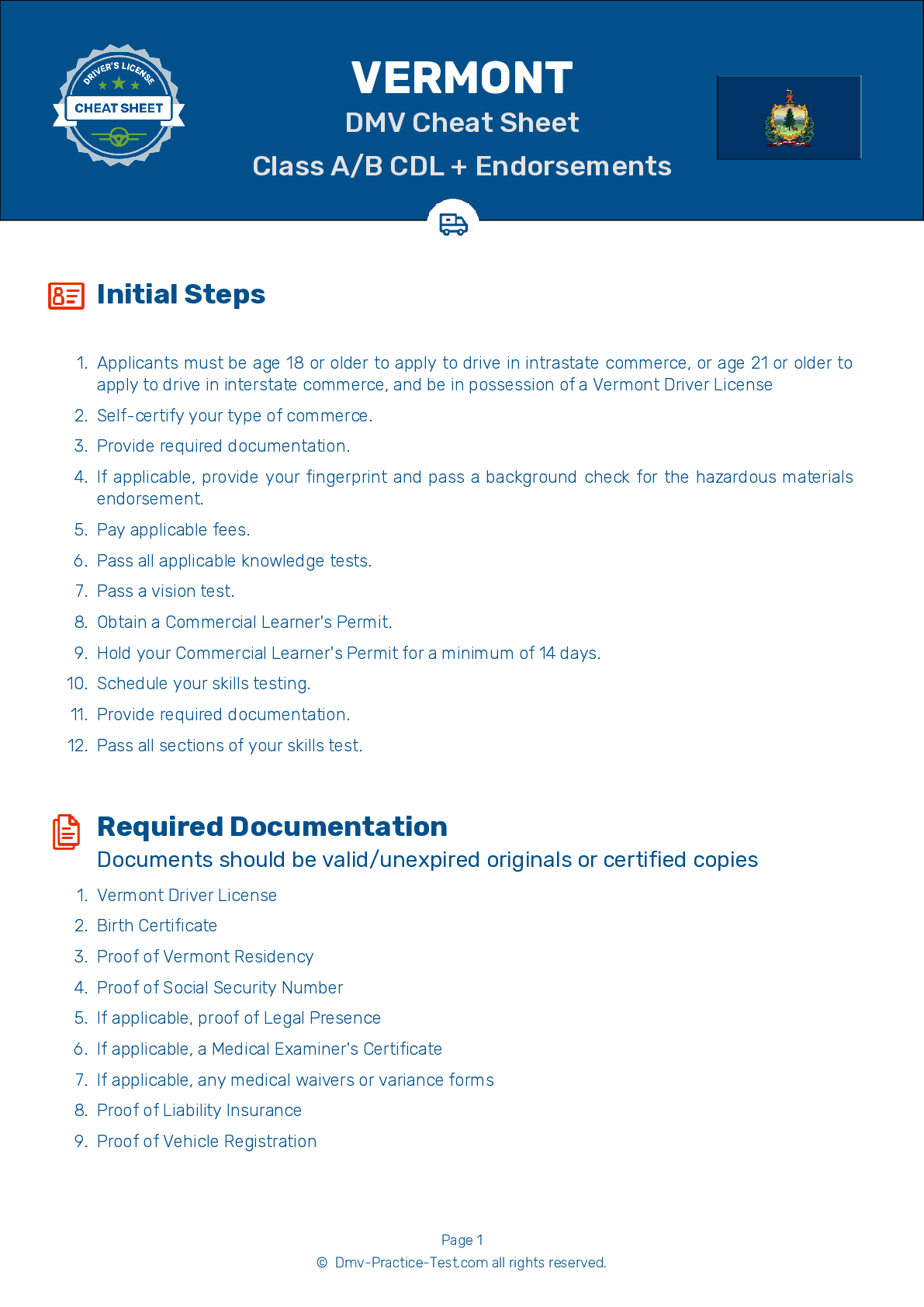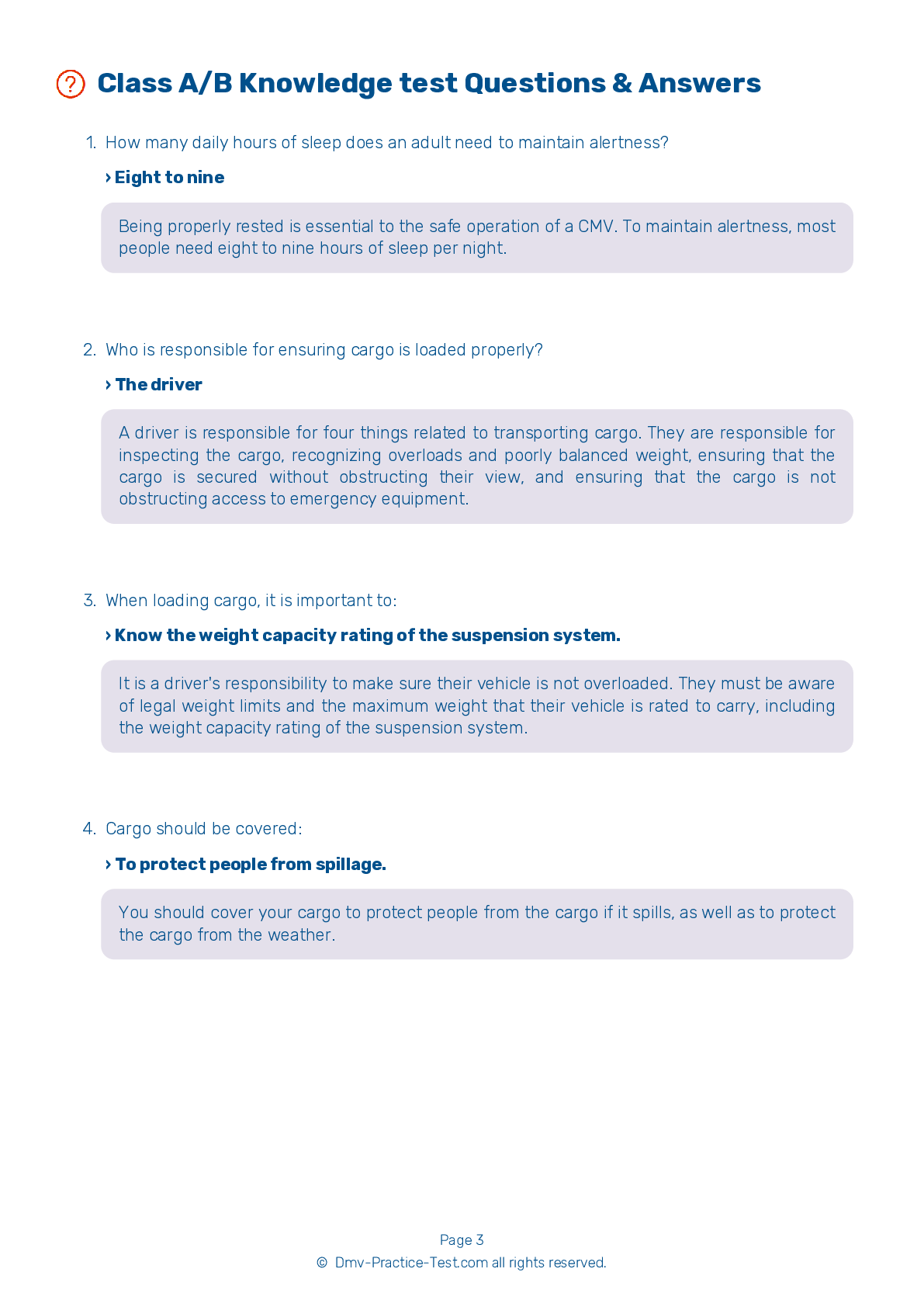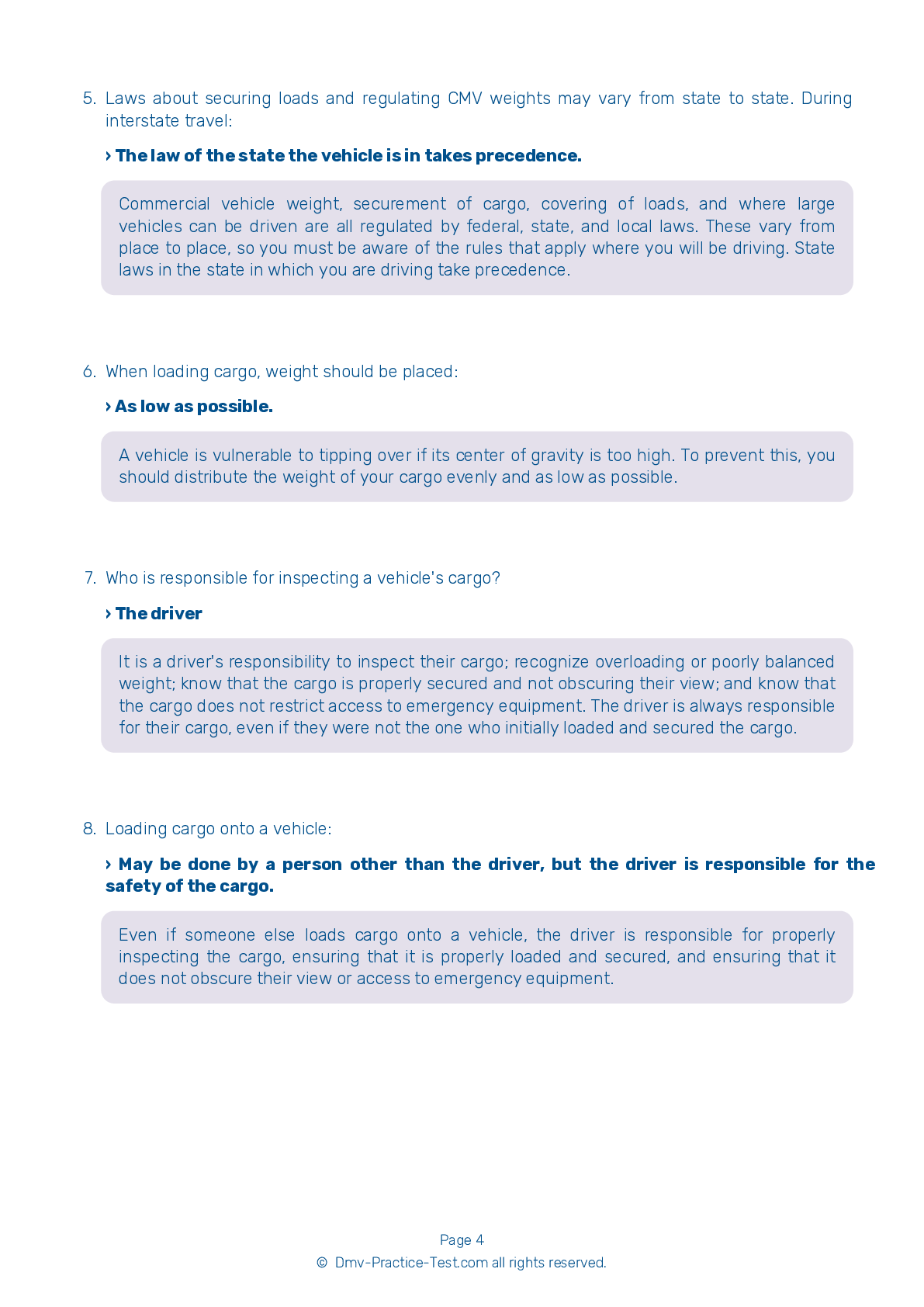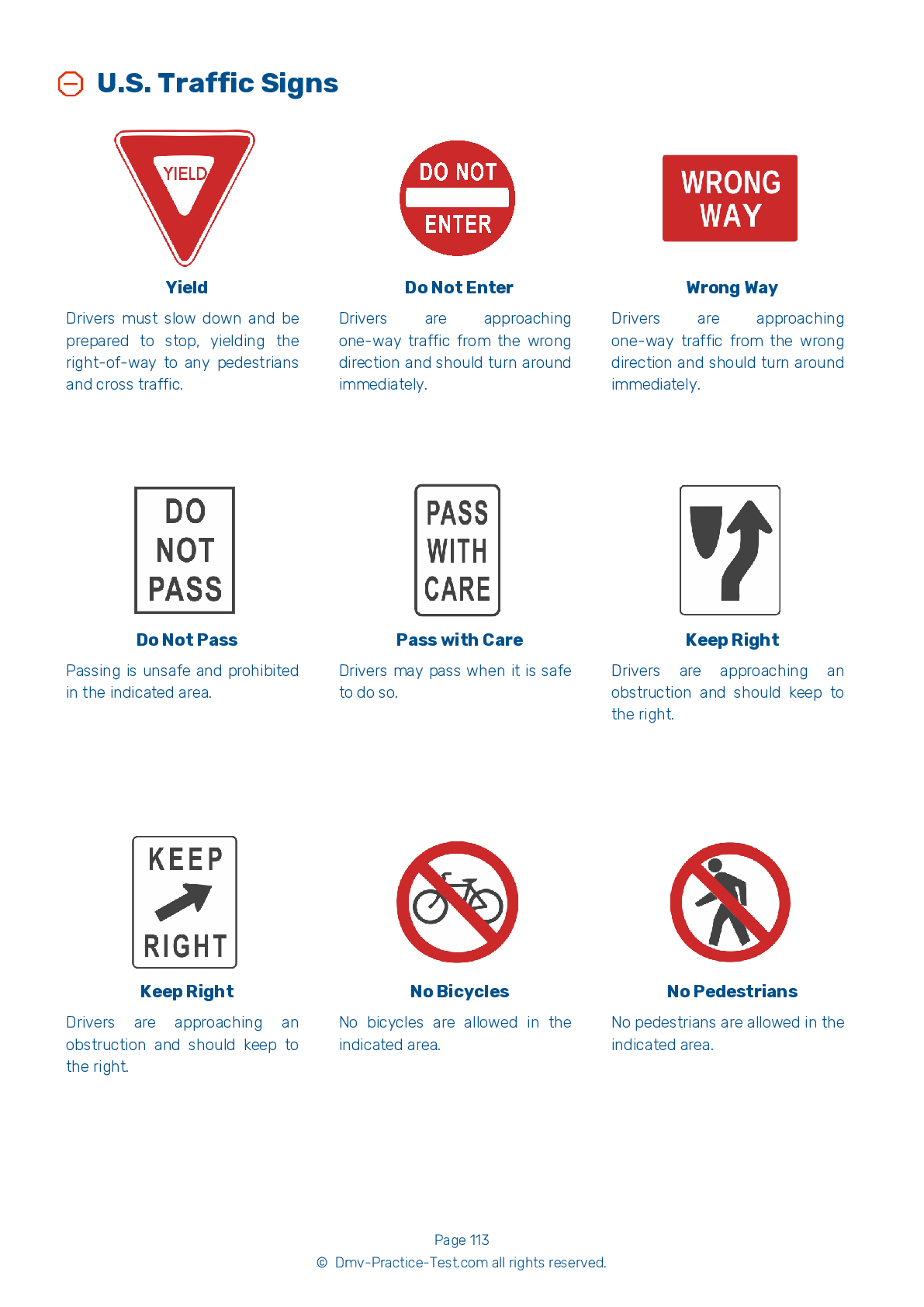Knowledge Test Class B #2
Class B Driving Test | Vermont 2025 #2 Page 4 of 7
Train for FREE online with our Vermont class B license test. The official exam test consists of several obligatory parts, with all of them checking your knowledge of different blocks of road rules. If you need to obtain a VT CDL class B permit in 2025, practice as much as possible. Free sample tests published on our website will help you check and improve your knowledge and boost your grades. Please bear in mind that CDL class B requirements may vary from state to state.
50
40
20
22 . While driving, you may:
While driving a CMV, reading and sending text messages is prohibited. You may not hold a cell phone to make a voice call or dial a phone by pressing more than one button.
23 . If you remain in neutral for too long while switching gears:
If you remain in neutral for too long while switching gears, you may have difficulty putting the vehicle into the next gear. If this happens, do not try to force the gear shift. Instead, return to neutral, release the clutch, increase the engine speed to match the road speed, and try again.
24 . Which of the following is not a type of tie-down equipment?
You must use the proper number of tie-downs when securing cargo on a flatbed trailer. Examples of tie-down equipment includes ropes, straps, and chains.
25 . Containerized loads are used:
Containerized loads are generally used when freight is carried partway by rail or ship. Sealed materials cannot be inspected, but a driver should ensure that the containers do not exceed safe and legal weight limits.
26 . If approaching a vehicle with a distracted driver, you should:
If you see a distracted driver, give them plenty of space and maintain a safe following distance.
27 . Hydroplaning happens most often when:
Hydroplaning is most likely to occur when driving on wet roads with tire pressure that is too low and tire tread that is too worn. If there is enough water on the road, hydroplaning can occur at speeds as low as 30 mph.
28 . When stopping, the brake pedal should be:
When braking, push the pedal down gradually to ensure that the vehicle comes to a smooth, safe stop.
2025 Vermont | Frequently Asked Questions
In Vermont, to acquire a CDL Hazmat endorsement, you need to pass a written knowledge test. Prior to the test, you should study the Vermont Commercial Driver's Manual's Hazardous Materials section. You'll also need to undergo a federal background check and fingerprinting. Lastly, you must provide proof of U.S. citizenship or lawful permanent residency.
To obtain a CDL Hazmat license, you must already possess a Commercial Driver's License (CDL). You'll need to pass the Hazardous Materials Endorsement Knowledge Test, undergo a TSA background check, and provide fingerprints. Additionally, you must be at least 21 years old and provide proof of U.S. citizenship or lawful permanent residency.
When applying for a CDL Hazmat endorsement, you'll need to provide proof of U.S. citizenship or legal status, such as a birth certificate or green card. Also required is your Commercial Driver's License (CDL). You'll need to fill out a Hazardous Materials Endorsement application and provide fingerprints for the TSA background check.
Yes, there is a dedicated written test for the CDL Hazmat endorsement. This knowledge test focuses on the handling and transportation of hazardous materials. It is required to ensure drivers understand the safety protocols, regulations, and procedures associated with transporting hazardous substances. The test content can be found in the Hazardous Materials section of the Vermont Commercial Driver's Manual.
The written test for the CDL Hazmat endorsement covers a range of subjects related to hazardous materials transport. These include identifying hazardous materials, understanding shipping papers, placarding, loading and unloading, bulk packaging, driving and parking rules, emergencies, and the rules for each class of hazardous materials. It's designed to ensure safe and legal transportation of these materials.
Yes, there are additional charges associated with acquiring a CDL Hazmat endorsement. These include the cost of the written test, fingerprinting, and a background check. The total cost can vary, so it's advisable to check with the Vermont Department of Motor Vehicles for the most accurate and up-to-date fee information.
Yes, a background check and security clearance are mandatory for obtaining a CDL Hazmat endorsement. The Transportation Security Administration (TSA) conducts these checks to ensure the driver doesn't pose a security threat. This process involves fingerprinting and a review of criminal, immigration, and mental health records. The driver must also be a U.S. citizen or have legal status.
Yes, specialized training is required for the CDL Hazmat endorsement. This includes learning about hazardous materials regulations, emergency response procedures, and safe handling practices. After training, you must pass a written test to demonstrate your knowledge. Additionally, you must pass the TSA security threat assessment to get the Hazmat endorsement on your CDL.
No, you cannot legally transport hazardous materials without a valid CDL Hazmat endorsement in Vermont or any other U.S. state. This endorsement is required by federal law and ensures that drivers have the necessary knowledge and skills to safely transport hazardous materials. Violating this law can lead to serious penalties.
You can add the Hazmat endorsement to your current CDL license; a new application isn't necessary. However, you'll need to pass a written test and a TSA background check. Once these are completed and approved, the Hazmat endorsement will be added to your existing CDL. Remember, this endorsement must be renewed every five years, or according to your state's regulations.



